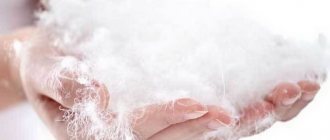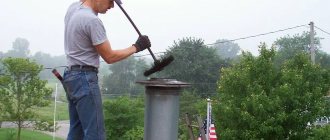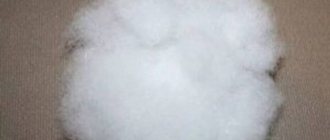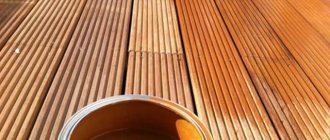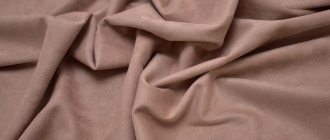Wet washing using powder or other cleaning agent is familiar to everyone. But some wardrobe items require an exceptional approach due to the delicate properties of the material.
On the label of such things, as a rule, there is one or both icons at once: “Dry cleaning”, “Do not dry clean”. In such conditions, the only way to tidy up the product is to carry out the procedure yourself without using water. But not everyone knows how to carry it out.
What is dry cleaning
From the name it is clear that cleaning excludes the presence of water. To remove contaminants, both special chemicals and improvised means are used, which are applied locally to problem areas. Another option for dry cleaning is a washing machine with a drying function, which treats products with a stream of air.
Most often, such cleaning is used for very delicate fabrics that can become deformed under the influence of water. Dry cleaning is also good for handmade items.
What kind of things is the treatment suitable for?
Dry cleaning of clothes can be carried out on all types of fabrics, but there are also varieties. Dry cleaning means surface cleaning of fabric (from debris, pet hair, etc.), as well as chemical treatment with various compounds. They cannot be applied to all materials, but the tag will help you understand what products are acceptable for a given garment. You can see several types of icons on it.
- Empty circle - only surface dry cleaning can be carried out without the use of any compounds.
- Crossed out circle – dry cleaning cannot be carried out.
- A circle with the letter A inside - the fabric can withstand the use of all chemicals for cleaning.
- With F inside – you can use products containing freons and white spirit.
- Circle with F, underlined at the bottom - care should be taken and cleaned gently.
- And with F, underlined twice at the bottom, delicate processing of the fabric is required.
- Circle with the letter P – dry cleaning should be carried out with products containing perchlorethylene. If it is underlined once or twice, then, by analogy with F, this is a gentle and delicate wash.
What pieces of furniture and fabrics can be dry cleaned?
Always pay attention to the label, because this is where the necessary information is provided on how to care for the item. If you see an empty circle on the tag, then the product should be cleaned dry. Similar things are made from:
- leather or suede;
- tweed;
- silks;
- viscose;
- cashmere;
- fine knitwear;
- Angoras;
- wool;
- velvet.
Under the influence of moisture, these materials may change structure, stretch or lose shape. They are used to create:
- clothes and shoes;
- furniture upholstery;
- carpets;
- home textiles.
You can take the items to the dry cleaner or clean them yourself. Please note that if the circle on the tag is crossed out, dry cleaning is prohibited.
When is it necessary?
Dry washing is used if you need to clean such types of fabrics as:
- Genuine leather and suede.
- Wool.
- Cashmere.
- Velvet.
- Silk.
- Tweed.
- Fur.
This method is used to remove dirt from hard products, for example, orthopedic mattresses. Things with a lot of decorative elements are subjected to dry cleaning. Any fabrics that cannot be wetted can be removed from dirt using this method.
To understand whether a product can be wetted, you need to read the information on its label. The Dry Clean Only icon will appear as a white circle. The tag may also contain the note “dry clean only”.
Pros and cons of the dry method
Dry cleaning, like any other, has its pros and cons.
Advantages:
- complete absence of product deformation;
- some fabrics are not able to survive other cleaning;
- Some contaminants, under the influence of water, are even more strongly ingrained into the fabric structure;
- unlike water, it can remove old stubborn stains;
- copes well with greasy and oily stains;
- Suitable for cleaning carpets, since the product does not get wet and there is no need to dry it.
Flaws:
- chemical products developed for the dry method of caring for products do not cope with previously washed items;
- There is an opinion that aggressive solvents are not completely removed from the material, and over time the item becomes unusable.
Always pay attention to the tag, because if the product requires only dry cleaning, washing it can damage it.
How is it done in dry cleaning?
If you are unable to clean the product yourself, or there are concerns that it may be damaged, you need to contact a professional . In dry cleaning, dry washing services are quite in demand. The laundry will help remove difficult stains, rid clothes of greasy shine, dust, and static electricity.
The cost of services varies widely. It all depends on the size of the item, the degree of contamination, and the complexity of the work. For example, cleaners will clean a knitted jacket for 550 rubles, and dry washing a long mink coat will cost 2,100 rubles.
Before handing over the item, you need to clarify whether the dry cleaner will be able to achieve the result the client needs, and whether there is a risk that the fabric will be damaged.
Folk remedies
Some traditional dry cleaning methods do an excellent job of removing stains the first time, while others you will have to use more than once to achieve the desired result.
Soda
Universal cleanser. It is inexpensive, and fights dirt and bacteria very effectively.
Use baking soda to remove stains in different variations depending on the origin of the stain.
- Sprinkle a generous amount of baking soda onto a greasy oil or cream stain and shake it off after 20 minutes. The substance will absorb fat from the fabric, leaving the product without a greasy residue.
- Drops of paint on clothes will help remove kerosene and soda. Moisten the problem area with heated kerosene, and when the paint begins to dissolve, sprinkle with soda, and after a while remove.
- Sprinkle blood stains with regular laundry detergent (1 teaspoon), top with baking soda (2 teaspoons) and then pour vinegar (2 tablespoons). Rub the resulting slurry with a brush or your fingers, and after drying, remove by shaking the product.
- Cover old sweat marks with a mixture of baking soda and hydrogen peroxide taken in equal quantities. Leave on for about 30 minutes and then remove with a brush.
To prevent any unpleasant smell from remaining on your clothes, hang them outside or in a well-ventilated area.
Sauerkraut
Regular sauerkraut works well for cleaning floor coverings. Please note that you can only use cabbage that was not prepared with vinegar.
Take the product, squeeze out excess liquid and spread over the carpet. Wait until the cabbage dries and vacuum up the remains. Dirt, dust and other small debris stick well to pieces of vegetables.
Salt
Table salt will help give the carpet its original appearance. Take at least 1 kg of product (depending on the size of the rug) and spread it over the surface. Rub the salt in the direction of the pile with a brush. After 2-3 hours, vacuum the coating.
If possible, snow or beat out the carpet before cleaning. After all the manipulations, it will shine with fresh colors.
Vinegar
Vinegar has proven itself to be a great way to add brightness and richness to the colors of products.
To clean the carpet, dilute 2 tbsp. spoons of vinegar in 1 liter of water and treat the surface with the solution using a brush. Leave the product on the surface for several hours and then vacuum it.
At first glance, it may seem that such cleaning is wet, but since the procedure does not require drying, the process is considered dry.
Tea brewing
Tea brewing will help remove unpleasant odors and dirt from dark rugs. Brew a package of regular black tea and spread it over the surface after draining the remaining liquid. Wait until completely dry and remove with a vacuum cleaner. Not only fresh, but also pre-collected tea leaves from previous tea parties are suitable for the procedure.
Scotch
Using tape you can remove stains of various origins on leather and suede. Just stick a piece of tape on the problem area and tear it back with a sharp movement.
Please note that if the skin begins to peel, this method will not work, since particles of material will be removed along with the impurities.
Iron
An iron will help remove traces of vegetable or machine oil. Heat the device to the maximum temperature suitable for the material. Place several paper napkins on the front and back sides. Iron the surface. Under the influence of high temperature, the oil will melt and be absorbed into the napkins.
Starch
Corn starch will help get rid of stains of various origins.
Directions for use:
- To remove grease stains, first prepare the item by laying it out on a flat surface and placing a napkin with heated starch under the stain. Rub the affected area a little and leave the substance for several hours.
- You will have to get rid of blood stains in several stages. Sprinkle cornstarch on the stain and leave for 10-12 hours. The stain will become lighter. By repeating the procedure several times, you will get rid of the blood completely.
- To remove the unpleasant smell of smoke, place the item in a plastic bag, covering it with starch. Shake thoroughly and, if necessary, remove any remaining substance using a vacuum cleaner.
You can also use starch to clean a sofa or car interior.
Brush
A brush with rubber teeth is great for dry cleaning. It gently treats fabric and perfectly removes dried stains. A rubber brush can be used to clean carpets, furniture, as well as clothes made of cashmere, suede or angora.
Turpentine
Suitable for processing wool or silk.
- Soak a cotton swab in the product and blot the affected area. Remove the excess by sprinkling the area with baking soda. If the stain is not completely removed, repeat the procedure.
- Mix turpentine with ammonia and wipe the problem area. Leave the mixture on the product for at least 3 hours.
The product removes greasy and old stains well.
Wood sawdust
In a similar way, traces of gasoline are removed. Simply scatter the sawdust in the contaminated area and wait until it absorbs the gasoline.
Sand
Excellent for dry cleaning wool or fur.
Warm up the river sand a little and sprinkle it on the surface of the product. Wait until the sand cools down. After this, remove the excess with a vacuum cleaner. The sand has darkened, which means that it has absorbed as much dirt and dust as possible.
Hydrogen peroxide
Hydrogen peroxide is an indispensable product that works as a stain remover for white things.
Application options:
- Dilute 1 teaspoon of lemon juice in 2 teaspoons of peroxide. Distribute the resulting solution over the problem area and rub in with your fingers. After cleaning, remove any remaining mixture.
- Mix equal amounts of ammonia and hydrogen peroxide. Apply the mixture to the stain and leave until completely absorbed.
Peroxide will help not only remove stains, but also restore the whiteness of products.
Ammonia
Please note that most often, to remove stains, ammonia is diluted with water, which is not dry cleaning. Materials that do not tolerate interaction with water can be cleaned by mixing ammonia with ordinary salt. Take 4 tbsp. spoons of ammonia and 1 tbsp. spoon of salt. Mix and treat the stain with the resulting slurry. When the mixture is dry, remove the residue with a brush.
Definition
Dry dry cleaning of clothes is a method of cleaning clothes from stains using products that do not need to be dissolved in water. With this method, no liquid is used. The advantage of the procedure is the protection of products from fabric deformation, which cannot be achieved with regular washing.
Manufacturers usually mark washing instructions on clothing. But these tips are not always helpful or may be difficult for people to follow. Dry cleaning your clothes makes it easy to get the job done at home. It is necessary to control the entire process so that the products retain their appearance.
Special products for dry cleaning
Dry cleaning of items can be done using specialized chemicals.
Ready-made dry cleaning kits are available for sale. These include:
- stain remover in the form of a spray, gel or pencil;
- case;
- napkins;
- air conditioner.
Well proven:
- SpotRemover - used to remove grease stains, as well as stains from sugar-containing liquids. Suitable for both light and colored materials. The set includes a special brush for better cleaning.
- Minute - presented in the form of a gel-like substance. Used to remove contaminants of any kind.
- Woolite – designed for knitted and woolen products. The product should not be used on products of bright colors that may fade.
- Hagerty. Dry Cleaner Kit - used for dry cleaning of items made of cotton, linen, wool and silk.
- Dryel is a dry cleaning product that not only removes dirt from various materials, but also leaves a pleasant aroma.
- K2r – copes with the most severe dirt and old stains. Can be used to clean items made from various fabrics.
Please note that under no circumstances should you use water when using these products.
Important information
To ensure that dry washing is not only effective, but also safe, you need to take into account the following tips:
Test a new substance in an inconspicuous area. Even the most harmless cleaning products can cause damage to items.- You need to work with gloves so as not to damage the skin of your hands when rubbing the item.
- To clean light-colored fabrics, white bulk substances (salt, soda, starch) are used. Dark matter is processed with sand or bran.
- You need to carefully remove abrasives from fabric. Residues from the cleaning agent may damage the product.
Dry Cleaning Procedure
The procedure itself for products for various purposes is practically the same, but still has its own nuances and secrets.
Dry cleaning of furniture
Upholstered furniture is almost the most vulnerable place in the house to food debris, dust or other contaminants. It is quite difficult to rid upholstered furniture of blood or urine stains, since the liquid penetrates deep inside.
The sofa can be cleaned from dust and small debris in several ways:
- Use a vacuum cleaner with a narrow brush to go over the surface, paying particular attention to depressions and folds.
- Pat the surface with a special beater or simply with your palms, after covering the sofa with a slightly damp sheet. Your movements will cause dust and dirt to fall off the upholstery and stick to the damp sheet.
Local contamination can be removed using chemicals or improvised dry cleaning products.
If the stains are very old and you were unable to remove the stains yourself, it is better to seek professional help.
Dry cleaning of carpets and rugs
Carpets must be thoroughly cleaned at least once every 3 months. If there is a child or pets in the apartment, cleaning will need to be done as often as possible.
For minor stains, you can clean the carpet or carpet using folk remedies or dry powder intended for carpets.
Any removal of dirt from a carpet includes the following steps:
- Raising lint using a vacuum cleaner.
- Rubbing in detergents with a soft brush.
- Repeated use of the vacuum cleaner to remove product.
If there are stubborn stains, before using the powder, remove local stains with special chemicals for dry cleaning.
Cleaning curtains
Dry cleaning will be required if your curtains are made of viscose, silk, linen or cotton. You can remove local stains with special preparations or improvised means suitable for the appropriate type of fabric.
If your curtains require dusting, use a vacuum cleaner with a soft bristle brush attachment. If you don't have such a brush, wrap the curtain with a damp cloth. This way you can easily remove dirt and dust without damaging the material.
How to dry wash a mattress and pillows
Orthopedic and spring mattresses can only be cleaned dry. Remove old stains using suitable stain removers. You can completely clean the product using baking soda or a dry furniture cleaner. Distribute the substance on the surface and leave for several hours. Collect any remaining product with a vacuum cleaner.
You can also clean pillows and blankets in a similar manner.
Instructions and tips for home dry cleaning
First of all, sort your clothes by fabric type and color, just like you would for a regular wash. Next, prepare your items for cleaning:
- Place items in a laundry bag. This is a special container made of polyester or nylon, which protects the fabric from mechanical stress and prevents the appearance of pills and snags.
- Place a couple of cloth napkins soaked in cleaning solution in the middle of the bag. This is enough to prevent the material from drying out and becoming wrinkled.
- Select the “dry” mode on the washing machine and run it for half an hour at the minimum temperature.
- After the procedure, shake the fabric and walk over it with a brush to remove any remaining product.
Carefully hang things on hangers and leave to dry. To remove heavy stains, treat stains with a detergent before drying. If the machine does not have a suitable mode, you can choose a more accessible folk method.



